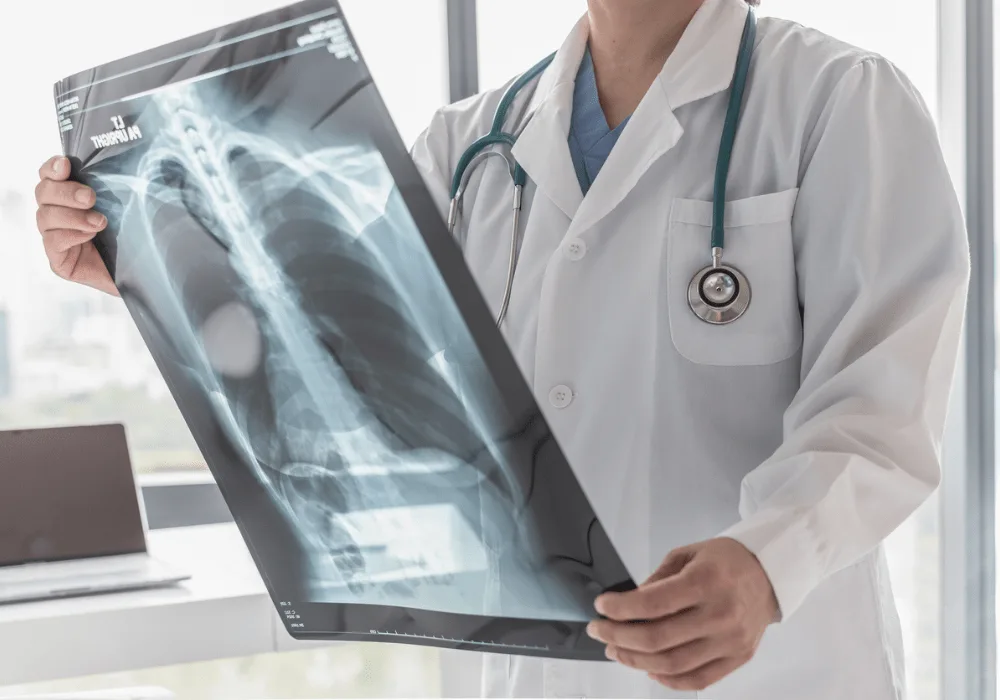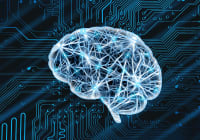The increasing volume of chest radiographs presents significant challenges for radiologists, impacting timely diagnosis and workflow efficiency. Traditional methods, while accurate, are often time-consuming and may lead to delays in patient care. The reliance on radiologists for manual interpretation can create bottlenecks in healthcare systems, particularly in settings with high imaging demands. The introduction of generative artificial intelligence offers a potential solution, particularly in automating report generation. A recent reader study published in Radiology assessed the impact of a multimodal generative AI model on chest radiograph interpretation, evaluating its influence on reading times, report accuracy and diagnostic performance.
The Role of Generative AI in Radiology Reporting
Generative AI models are designed to produce preliminary radiology reports, integrating vision-based analysis with natural language generation. Unlike classification models that merely detect abnormalities, these systems generate structured, contextually relevant reports, facilitating more efficient workflows. The study evaluated a domain-specific multimodal AI model for chest radiograph reporting, assessing its impact on radiologists' interpretation processes.
Recommended Read: Enhancing Chest Radiograph Quality Control with Automation
The study was conducted using 758 publicly available chest radiographs, with five radiologists participating in a two-phase reading process. In the first session, they interpreted radiographs without AI assistance, while in the second, they utilised AI-generated preliminary reports as a starting point, with the option to modify them. Reading times, agreement with final reports and overall report quality were measured and compared between the two sessions. The study design aimed to evaluate not only diagnostic accuracy but also the efficiency and practical integration of AI-generated reports into routine radiology workflows.
Efficiency Gains and Diagnostic Accuracy
The study found that AI-assisted reporting significantly reduced the time required for radiologists to interpret chest radiographs. Average reading times dropped from 34.2 seconds to 19.8 seconds, with improvements noted across most readers. This reduction in reading time suggests that AI-generated reports can facilitate quicker decision-making without compromising thoroughness. The decrease in reporting time was observed across normal and abnormal radiographs, as well as among radiologists with varying levels of experience and subspecialty training.
In addition to efficiency gains, improvements in report agreement and quality were recorded. The report agreement scores increased from a median of 5.0 (interquartile range [IQR], 4.0–5.0) to 5.0 (IQR, 4.5–5.0), while report quality scores rose from a median of 4.5 (IQR, 4.0–5.0) to 4.5 (IQR, 4.5–5.0). These results indicate that AI-generated reports were generally well-aligned with radiologists' findings, enhancing consistency and interpretative accuracy. The study also examined factual correctness, focusing on specific abnormalities such as widened mediastinal silhouettes and pleural lesions. Sensitivity for detecting widened mediastinal silhouettes increased from 84.3% to 90.8%, and sensitivity for pleural lesions improved from 77.7% to 87.4%. While the overall diagnostic performance improved, variability in individual radiologists’ sensitivity was noted, indicating differences in how AI-generated reports influenced interpretation.
Challenges and Considerations
Despite overall improvements, the study identified some limitations. Variability among radiologists highlighted differing levels of reliance on AI-generated reports, with some demonstrating scepticism. One radiologist, for instance, exhibited an increase in reading time, suggesting a reluctance to fully integrate AI suggestions. This variability underscores the need for further refinement and training to ensure AI models are optimally used across different clinical settings and expertise levels.
Another notable challenge was a decrease in sensitivity for detecting nodules, which declined from 86.7% to 80.0%. The discrepancy could be attributed to variations in AI-generated terminology, as radiologists who previously reported “nodules” sometimes adopted AI-suggested terms such as “granulomatous calcifications.” Such inconsistencies indicate that AI-generated reports may influence radiologists’ wording, potentially affecting diagnostic classification. Furthermore, while AI improved sensitivity in most areas, specificity changes varied, necessitating further validation to ensure consistent reliability.
The study’s retrospective and sequential design may also have influenced results, particularly in reading time reductions. Additionally, the small sample size of radiologists limited subgroup analysis, preventing deeper exploration of how AI impacted individuals with different levels of experience and specialisation. The absence of direct comparisons with prior imaging further restricted the assessment of AI’s potential in longitudinal patient evaluations.
The study demonstrates the potential of generative AI to enhance radiology workflow efficiency and diagnostic accuracy in chest radiography. By reducing interpretation times and improving report consistency, AI-generated preliminary reports can support radiologists in managing increasing workloads. The integration of AI in radiology has the potential to standardise reporting, minimise interpretation variability and improve workflow efficiency. However, continued validation and refinement of these models are essential to ensure reliability across various clinical scenarios. Further research is needed to address variability in radiologists' responses, enhance AI's contextual understanding of medical terminology and expand validation across diverse healthcare settings. The findings underscore the evolving role of AI in medical imaging, paving the way for more integrated applications in radiology.
Source: Radiology
Image Credit: iStock










